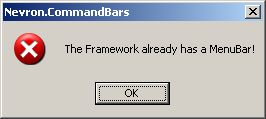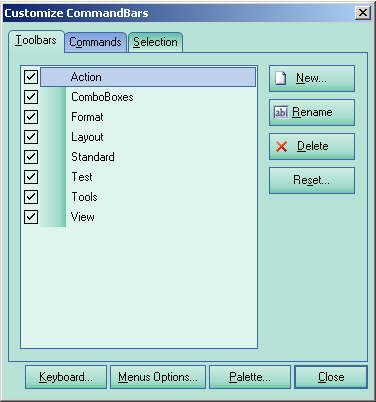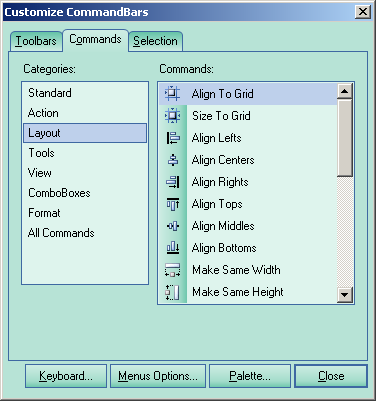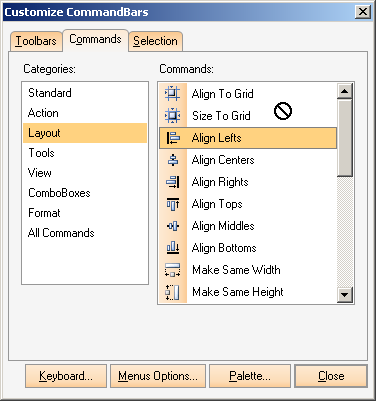The editor enumerates all the manager's children toolbars and displays them in a NListBox with CheckBoxes set to true. Each toolbar's checkbox corresponds to its visibility. The user can add a new toolbar, delete, reset or rename an existing one.
From the toolbars page in the editor click the "New..." button. The following dialog will appear:
Enter the desired toolbar name, select its DockStyle and optionally check the "Menu Bar" checkbox to create a NMenuBar instance.

The "Commands" page of the editor populates all the ranges and contexts registered with the manager. In the left NListBox are populated ranges and in the right one are all the contexts within the currently selected range. Using the left mouse button you can drag commands from this list to any existing NCommandParent.
The third page in the editor allows for editing a currently selected NCommand instance. When a NCommand is the currently designed one, it indicates that by a 2-pixel black frame drawn around it. If the currently designed one contains nested commands and there are some designable among of them, the command will display its drop-down menu allowing for its children to be edited.
The currently edited command is rounded by a 2-pixels black frame.
When currently designed command has designable children it will display a drop-down menu.
The selection page holds a property grid with selected object the currently designed command instance.
When the editor is visible, the manager enters a special mode named "Customizing". While in this mode, drag-and-drop operations are allowed and the user can create new commands, clone existing, or change their index or parent.
The following screenshots show and describe drag-and-drop support provided by the manager via its editor:
The drag-and-drop operation has begun. The manager searches for a valid command parent under mouse cursor.

The mouse hovers a NToolbar component and visual feedback is provided, which indicates where the newly created command will be inserted.







